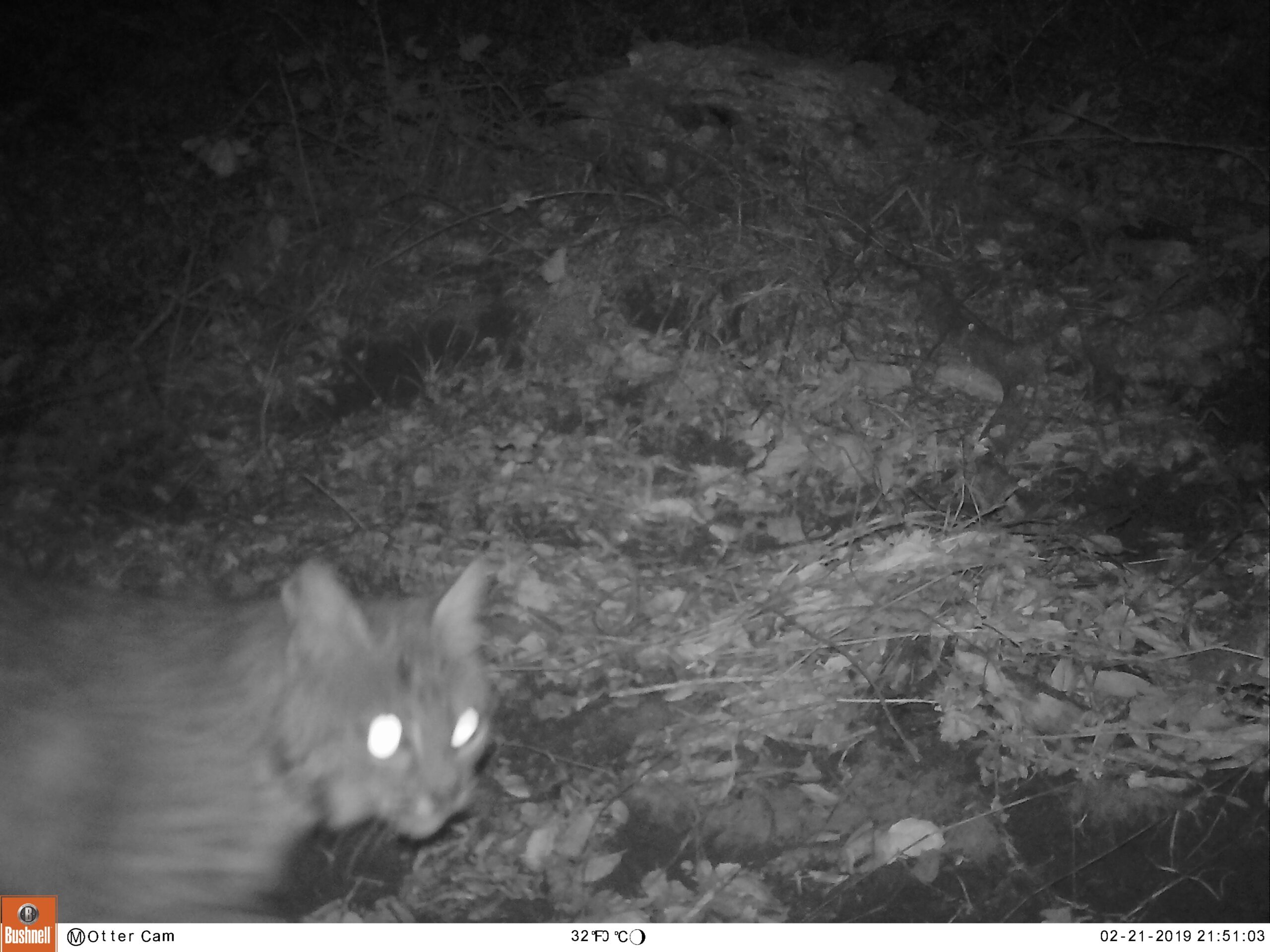
A bobcat travels through a ranch along Sir Francis Drake Boulevard.
LAGUNITAS CREEK–Last winter, SPAWN began regularly releasing footage from our motion- and temperature-activated cameras as part of a fun weekend celebration. Now, as trail cameras reveal data spanning multiple seasons, SPAWN will analyze this data to lend a more practical use in addition to the fun, weekly photo shoot.
We will continue to release weekly photographs on our Facebook page, as these have been a great way to connect with our neighbors in the Lagunitas Creek Watershed! In addition to these, we are analyzing data for species location, time, frequency, duration, and sequence to address the following hypotheses. Data come from five trail cameras, all of which are positioned along Lagunitas Creek or its tributaries. Three cameras are located in Tocaloma and two on Black Mountain.
1) Sightings of each species will occur unevenly throughout the day.
As certain species have strong diurnal or nocturnal habits, we expect appearances on trail cameras to reflect these trends. Black-tailed deer (Odocoileus hemionus) appear to have more flexibility than most species, not conforming to a strict diurnal or nocturnal habit.
2) Rain events affect the density and diversity of camera sightings.
Water availability may alter certain food sources. Heavy rains may also provide cover, potentially decreasing visibility. Rains may also change shelter availability, as we observed in the flooding of a woodrat nest. These factors give us precedence to believe that distinct sets of photograph properties (density and diversity) will have distinct associations with rain events.
3) Presence of prey or predator species impacts the behavior of the other.
We are curious to track a trend in peak occurrences of predator and prey species. It is possible that the presence of prey species will attract predators. It is also possible that presence of predator species will deter prey until they have cleared the area.
New data will be incorporated on a rolling basis, and we will be releasing results in the new Wildlife Monitoring section of our blog. We hope that this project can be a gateway for interacting with and learning from our other-than-human community in the Lagunitas Creek Watershed!

Black-tail deer fawn at the Tocaloma floodplain restoration site.




